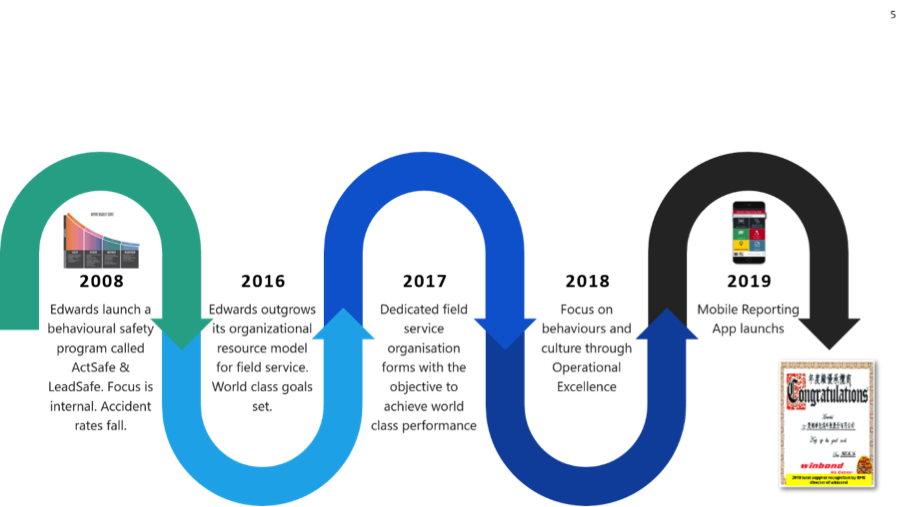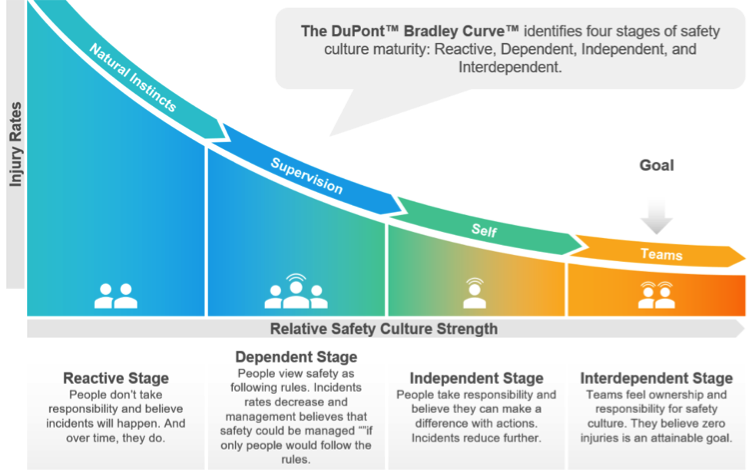By Alan Ifould, Edwards Vacuum
In a recent webcast at SESHA 2020, the high-tech industry’s international environmental, health, and safety association, Alan Ifould, with input from Richard Meredith, Edwards’ senior manager for safety, health, and environment, explored several scenarios for driving continual improvement in sub-fab safety. The sub-fab can be a dangerous place. It is crowded with equipment supporting process tools in the fab above, all crammed tightly within the footprint defined by the supported tool. Primary among these supporting systems are the vacuum pumps and abatement systems that extract process gases and by-products and render them harmless for disposal. Many of these gases are toxic, flammable, pyrophoric, or environmentally damaging and pose significant threats to the health and safety of fab personnel and the surrounding community if not handled with great care. Safety has always received the highest priority at Edwards. In 2017 we renewed our focus on achieving “world class” safety performance for field service operations and, subsequently, across the board – in our own facilities and for our products, personnel, and users in the field.
The first step in that pursuit was simply defining what world class safety performance is. Two widely used industry metrics are lost work case rate (LWCR) – accidents and ill health cases as defined by the Occupational Health and Safety Administration (OSHA), and total recordable case rate (TRCR) – all recordable cases resulting in lost work, restricted work or medical treatment. A survey of leading companies in our industry revealed that the best among them achieve a TRCR of 2.35 per million hours worked and a LWCR of 0.35. These benchmark numbers became our goals.
As with all goals, these provided a gauge for our success. But one of the most important lessons we learned in pursuing them is that achieving world class safety is an ongoing process of continuous improvement. No level of performance, however good, is ever good enough. There is always room for improvement. More importantly, we live and work in a dynamic environment – things change, and complacency inevitably leads to increased risk. We must look constantly and vigilantly for ways to work more safely. World-class safety is a journey, not a destination.

Figure 1: Edwards’ safety journey has not been a straight line. Our decision to pursue world-class safety was instigated by the realization that we really could do better. In 2008 we had launched behavioural safety programs that focused primarily on safety within our own facilities. These programs were successful, but by 2016, a year of record setting growth, we had outgrown our organizational health and safety resource model. In that year we saw an uptick in reportable events, driven largely by incidents in the field. In 2017 we created a dedicated field service health and safety organization. We focused our efforts on creating a culture of safety using a model we call Operational Excellence. By 2019 we had achieved a threefold improvement in our LWCR and TRCR (compared to 2016). More importantly, we were recognized by our customers for our contributions to safety in their workplaces.
Addressing 3 key challenges
Some examples of challenges we have faced and solutions we have found may help to illustrate our holistic approach to problem solving in this arena.
- Internal versus external focus
Challenge: The behavioural safety programs we initiated in 2008 yielded significant benefits, but the programs were focused primarily on internal safety within our own facilities. Dramatic growth in our field service organization, resulting from rapid expansion of our market, especially in Asia, resulted in an unfavourable excursion in the number of safety-related incidents.
Solution: We had essentially outgrown our health and safety organization. In response we created a dedicated field service safety organization. Among its first actions was the commitment to achieve world-class safety across all our operations.
- Rapid expansion
Challenge: Closely related to the first example, the second challenge also arose from rapid expansion of the field service group. Even with rigorous training, risks are higher for new, inexperienced personnel. The large influx of new field service engineers in one particular region of the world, where the industry itself was relatively new, resulted in an understandable elevation of the overall risk profile. More troubling, was the persistence of this risk beyond a normal learning curve, which was ultimately traced to high turnover among new employees.
Solution: In this region, rather than throwing more resources at training and procedures, we directed our efforts toward retention of employees. We looked at the reasons they were leaving and developed an employee motivation program that delivered clear career prospects, formal progression, and structured training and onboarding improvements to increase inclusion, employee value, and sense of belonging. Over a three-year period, we reduced employee turnover in this region by more than half, and safety performance improved commensurately.
- Reporting
Challenge: Our safety reporting process was not working. Field service staff had to wait to connect to a VPN to file a report. The delay and extra effort required was discouraging reporting and therefore engagement.
Solution: Our solution was to put safety reporting literally “in the hands” of our service engineers by developing a simple, easy-to-use mobile reporting app. The app allows “as it happens, where it happens” safety event, hazard & observation reporting. The initial trial received an overwhelmingly positive response leading to a global rollout. Improved dashboard reporting drove visibility, response, and continuous safety improvement. The app encouraged the growth of a culture of safety with an increased sense of individual ownership and influence on health and safety.

Figure 2:Dupont’s Bradley curve identifies four stages in the development of a culture of safety, ranging from an initial Reactive Stage, where people don’t take responsibility for safety and rely on their natural instincts to respond, to the ultimate Interdependent Stage, where teams feel ownership for safety and empowered to achieve zero injuries.
Closing remarks: Developing a culture of safety
World class safety requires the constant vigilance and active participation fostered by empowered interdependent teams. The culture thrives when members demonstrate visual leadership – do as I do. Accidents do still happen, but when they do, we act with transparency, they are investigated fully, and actions are taken to ensure they do not happen again. Importantly, health and safety programs must align with other business objectives – our own and our customers. Ultimately, world-class safety is a mindset, an attitude that guides behaviour and extends to both the community and employees outside the work environment.
